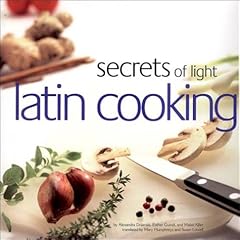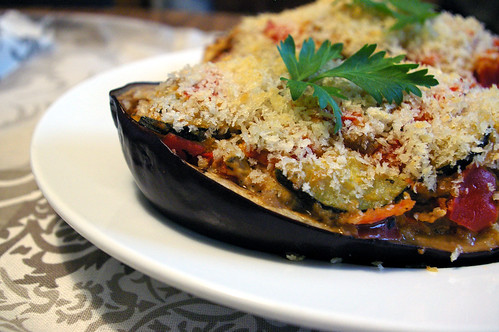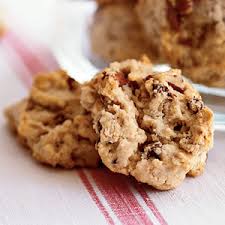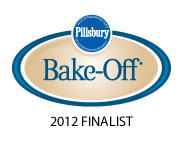
BS"D
I love nothing more in the summer months then stepping out the sliding doors to my patio, clipping some fresh herbs from the containers there, and going not more than the few feet back to my kitchen, and putting the vibrant green herbs into my cooking.
Many people are afraid to start vegetable and herb gardens because they don't know what to do with the plants. My theory is, don't over think it. My grandmother and mother always had lush vegetable gardens with zucchini's the size of baseball bats, and more tomatoes than we knew what to do with. In the summer months, whenever we kids would go to a friend to play we were given a brown paper grocery bag with the prolific veggies rolling around inside. I think we even began leaving it by friends' and neighbors' doorsteps in particularly bountiful years. As such, when Mother's Day rolls around I get the itch to plant. I feel compelled to plant tomatoes, but have found not much else grows in my moderately sunny patch. Herbs I have found to be the exception.
I have successfully grown basil, oregano, sage and chives. My basil seems to be the most successful, which prompted me to plant 3 varieties this year. My favorite are sweet basil and lemon/lime basil, which has a slight citrusy flavor that is lovely in salads. I have found that they do best planted in window boxes or containers. The window boxes are the best as they are shallow, and one bag of potting soil will go a a long way. I don't actually have them attached to windows, just sitting on a bench on my patio. By utilizing containers, as opposed to planting in the ground, I have found the herbs to be less bug infested, and there are very few weeds. This translates to low maintenance gardening. They come up very quickly, even when I am not on top of things and end up planting late. The kids love to help, and it is a great teaching tool to show them that this little seed yielded something they could now pick and eat. I think it makes them more interested in cooking if they know they had a hand in growing the ingredients.
Here are my herb growing tips:
1) Use a window box or container with drainage holes (or drill your own).
2) Line the bottom of the box with a single layer of paper coffee filters, allowing the water to drain out and keep the soil in the container.
3) Fill the boxes or containers 3/4 full with organic (my preference) potting soil and a few cups of fertilizer (manure or compost preferably).
4) Use seeds to start. They are cheaper than the starter plants and you get so much more in the end. I also think the seeds yield stronger plants.
5) Poke 3-4 inch holes in the soil several inches apart. Put a few seeds in each hole and cover with soil. Soak with water just after planting. Set in sunny area.
6) Depending on rainfall in your area, check every few days and water if dry. If you get a lot of rain, you will have to water infrequently.
7) When first buds of basil appear, pinch off the little leaves in the center. This is supposed to make them stronger.
8) After you pick your herbs, check them for bugs according to the laws of kashrut. I like to use the Star-K method.
9) If you want to pick and/or check your herbs in advance, wrap in a damp (not soaking) paper towel and refrigerate. They will still very fresh looking up to 24 hours.
10) Use kitchen shears to snip herbs directly into your cooking. No need to dirty the cutting board!

I came across a delightful cookbook in my library called Secrets of Light Latin Cooking by Alexandra Drijanski, Esther Guindi and Mabel Killer. It is translated from Spanish by Mary Humphreys and Susan Lowell. As far as I can tell, these women are members of the Jewish community in Mexico City. Some Sephardi and some not. Looking at the recipes, I can definitely see the Sephardi influence. There are recipes for rice stuffed vegetables and tabouli (not typical Latin American fare). Most of the desserts are appropriate for Passover. Although this is not ostensibly a kosher cookbook, there are no treif ingredients used in the book, nor mixing of meat and milk in any of the recipes. The recipes happen to also be extremely gluten free friendly, including many rice dishes and flourless desserts.
The recipes below, from this cookbook, not only make good use of fresh herbs, but they are also appropriate for the 9 days, which we are in currently. During the 9 days, we do not eat meat other than on Shabbat. If you do not have fresh herbs available, you may substitute 1 teaspoon dried herbs for 1 tablespoon fresh.
All the recipes below are good for getting kids involved in the kitchen. I think it is especially important when you have children with special dietary needs to understand about their unique food preparation needs. What better way to do this than set them to work in the kitchen. It's a great bonding experience, and you will be surprised how much they are able to do. Always use plastic knives with small children, and make sure they wash their hands after handling raw fish, meat or eggs.
Greens with Mango Dressing
(p. 34)
Serves 2Ingredients:
3 cups salad greens
1/2 cup alfalfa sprouts
1/2 cup (mung) bean sprouts
Dressing:
1 Tablespoon lemon juice
2 Tablespoons orange juice
3/4 tablespoon Dijon mustard
1 Tablespoon oil
1 teaspoon chopped fresh cilantro
1/2 mango, cut into cubes
Puree together the ingredients of the dressing.
Pour the dressing over the vegetables.

Eggplant Stuffed with Rice
(p. 90)
Serves 2 (p. 90)
Ingredients:
2 large eggplants (not peeled), cut in half and soaked in salted water for 30 minutes
salt
non-stick cooking spray (or 1 Tablespoon olive or canola oil)
1 teaspoon crushed garlic
1 teaspoon chopped red onion
3/4 cup peeled, seeded, and diced tomatoes
1/2 cup rice
2 cups water
2 Tablespoons fresh oregano, chopped*
2 Tablespoons Parmesan cheese
*The original recipe doesn't call for a specific amount of oregano. I estimated this to be an appropriate amount for the dish, but you may use more or less.
Remove the eggplant from the water, and scoop out the inside. Save a little of the inside of the eggplant and dice. Place in a small mixing bowl and add salt to taste.
Bake the eggplant shells at 350F degrees for 15 minutes.
Heat a frying pan over medium-high heat. Spray with cooking spray or oil, and saute the garlic, onion, tomato and diced eggplant. Add the rice allowing it to saute briefly. Add the water, salt, and oregano. Lower the heat, cover and simmer until the rice is tender, about 20 minutes.
Stuff the eggplant halves with the cooked rice mixture. Sprinkle with Parmesan cheese.
Bake at 350F degrees for 15 minutes longer.
The following recipe calls for "firm textured white fish", but I think salmon fillets would work well too.
Fish "Hamburgers"
(p. 109)
(p. 109)
Serves 2
Ingredients:
10-ounces firm textured white fish, such as fresh cod
1 Tablespoon grated carrot
1 Tablespoon minced onion
1 teaspoon chopped cilantro
pinch of saffron (or turmeric)
1 teaspoon grated lemon zest
1 teaspoon crushed garlic
2 teaspoons fresh grated ginger
salt
1 egg white (or equivalent egg substitute)
non-stick cooking spray
Simmer the fish for 5 minutes in gently boiling water, then grind or finely chop it.
Mix together the rest of the ingredients, finishing with the egg white, which should be lightly beaten before being mixed in.
Form fish mixture into patties.
Spray a baking dish with non-stick cooking spray, place the patties in the dish, and bake at 350F degrees until they are browned, about 20 minutes.














